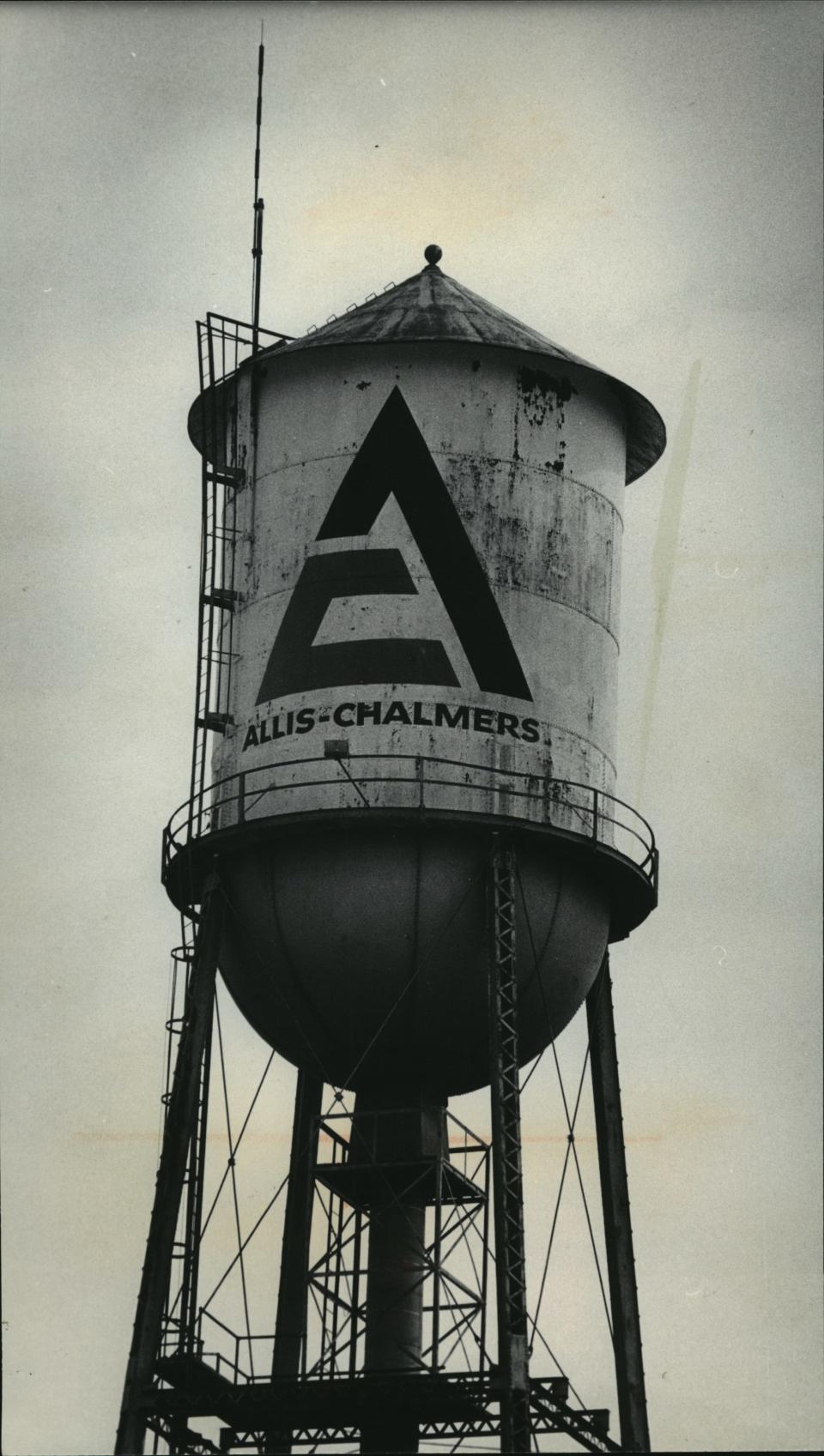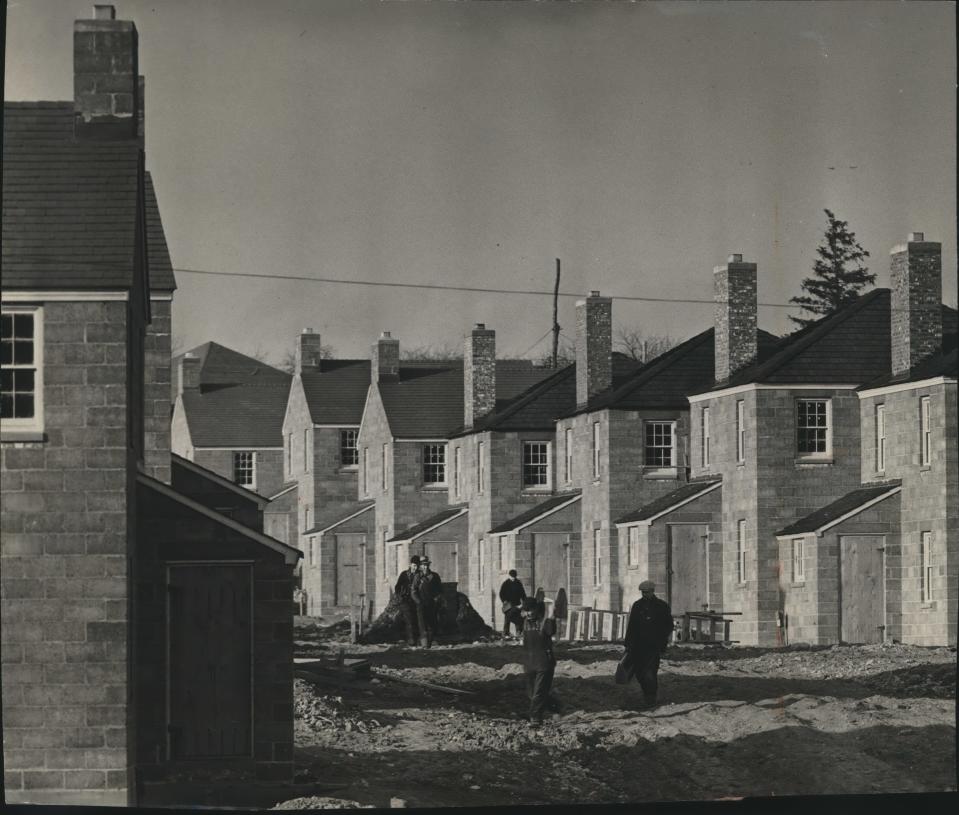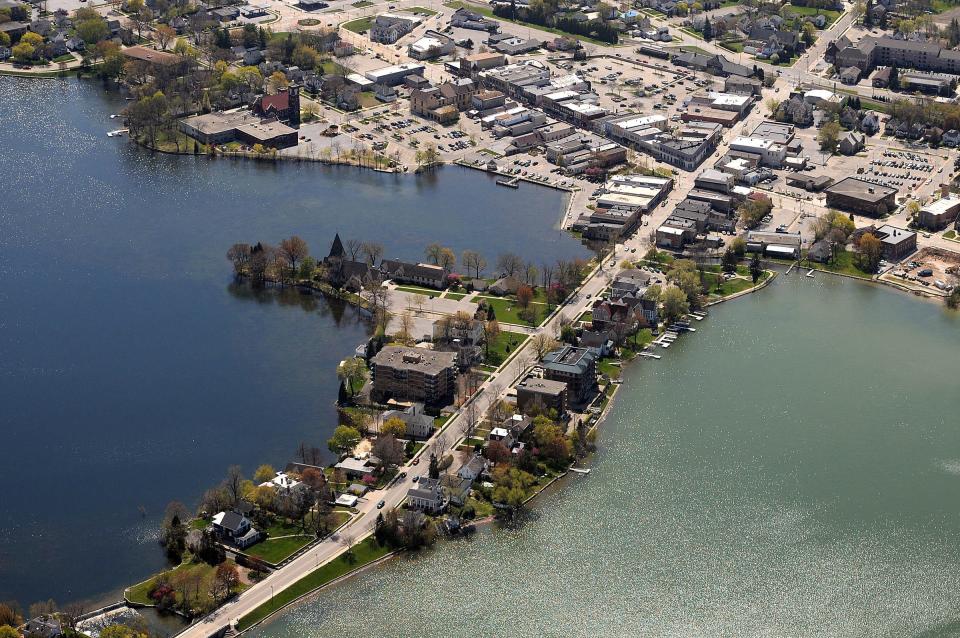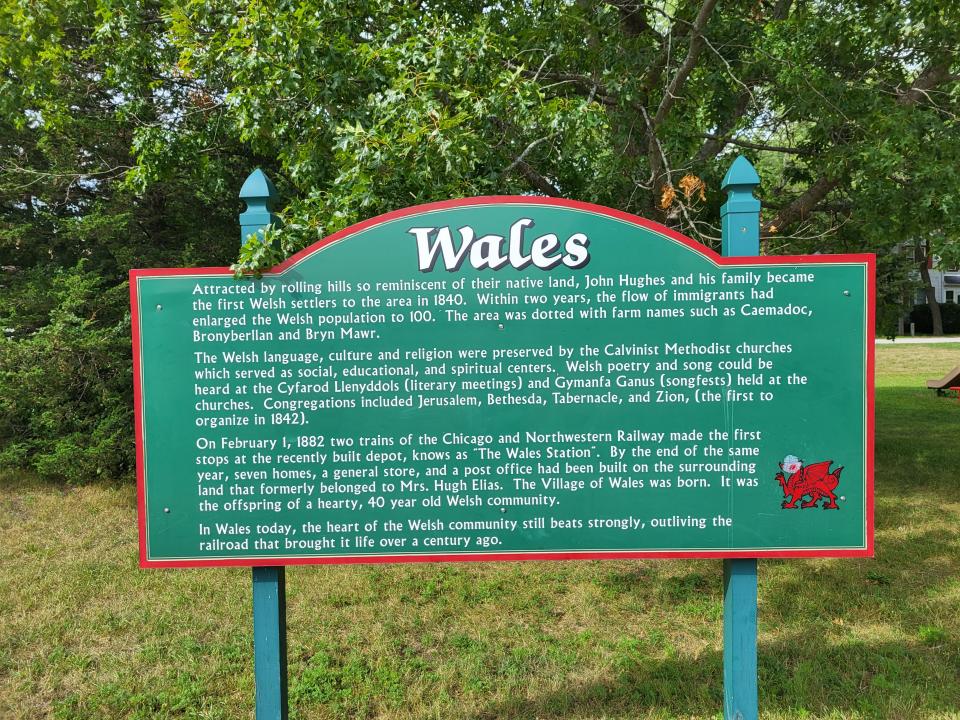What's in a name? The story behind how Milwaukee's suburbs like West Allis, New Berlin and Wauwatosa got their names
Some of the names of Milwaukee's suburbs are straightforward.
Whitefish Bay: They used to catch a lot of whitefish in the bay there.
Port Washington: Named after George Washington. And yeah, it's a port.
But the story of how other communities surrounding Milwaukee got their names isn't always so intuitive.
So we did a bit of digging to find out about how the names came to be and turned up a few other facts along the way.
Before we get too far into this, no, it's not an exhaustive list. But it should give you something to chew on. Or trivia to try on your friends. Let's dive in.
Was there ever an East Milwaukee and North Milwaukee?
The answer is yes. While now there now are both a West Milwaukee and South Milwaukee, there used to be all four, said local historian, author and Journal Sentinel contributor John Gurda, who wrote about the Milwaukee suburbs' creation in his book, "The Making of Milwaukee."
South Milwaukee was incorporated first, in 1892, he said. Then came North Milwaukee in 1897, East Milwaukee in 1900 and West Milwaukee in 1906. East Milwaukee became Shorewood in 1917. North Milwaukee, an area near 35th and Villard, was annexed back by the city of Milwaukee in 1929.
What about West Allis? Was there an East Allis?
Speaking of compass points, what about West Allis? Is there an Allis? Or East Allis? If you're thinking it has something to do with Allis-Chalmers, you're on the right track.
The forerunner of Allis-Chalmers was the Edward P. Allis Co., Reliance Works, which was on First and Florida and was the biggest employer in Milwaukee for a time, Gurda said.

Allis outgrew that plant, merged with some other firms to form Allis-Chalmers, and bought land west of the city, around 68th and Greenfield, and that's where it built a huge new plant, much of which is still there.
"When it incorporated back in 1902, it was West Allis," Gurda said. "Allis was the location for the first plant, so obviously West Allis was the location for the second."
The 'Greens': Greendale and Greenfield
Do you ever get confused between the two "greens," Greenfield and Greendale? (We won't judge.) If so, it might help to know a bit of history.
Greendale is one of three government-sponsored "greenbelt" communities built as part of the Resettlement Administration under Franklin Delano Roosevelt's administration, according to the Wisconsin Historical Society. (The others are Greenbelt, Maryland, and Greenhills, Ohio.)
Greendale was chosen due to its proximity to a major city (Milwaukee) and having enough space to develop a village center for shops, a community center and offices, with homes built around the center for ease of walking. Construction on Greendale began in July 1936, and the first families moved in in April 1938.

Greenfield is much older. Originally known as Kinnickinnic, Postmaster Olney Harrington suggested the alternative name Greenfield in 1839, according to the Wisconsin Historical Society. The residents liked it so much, the name was officially changed in 1841.
Threatened by annexation to Milwaukee beginning in 1902, many of Greenfield’s surrounding towns grabbed portions of Greenfield on their way to incorporation. Greenfield was the last of the suburbs to officially become a city in 1957, but at just one-third its original size.
Is New Berlin named after Berlin, Germany?
The origin of New Berlin's name might seem obvious: Berlin, Germany. That's partially true, Gurda said, but it's a bit more complex.
The first settlers in the area near the Milwaukee/Waukesha county border were largely Yankees — East Coasters from places like New York and New England, and there was a village called New Berlin in upstate New York.
The New Berlin in New York was named for a village in Berlin, Connecticut, which took its name from Berlin, Germany. "So actually the New Berlin in Wisconsin should be New New Berlin because it's named after New Berlin in New York," Gurda said.
And yes, you read the "New Butler" part correctly. We know it now as simply Butler, but in 1911, the settlement of "New Butler” was established in Waukesha County, settled mostly by railroad workers and their families. It was incorporated as a village in 1913 with a population of 200. The “New” was dropped from the village’s name in 1926.
Milwaukee suburb names with Native American origins
Names from many suburban communities have a Native American origin.
Wauwatosa, for example, references "the great walker," a noted Indian chief of the vicinity, according to the Wisconsin Historical Society. Another source interprets the name to mean "lightning bug" or "dim of memory" from the word wawatosi.
Oconomowoc is named from a Potawatomi word meaning "gathering of the waters," according to the Encyclopedia of Milwaukee, a digital urban history encyclopedia created and housed at the University of Wisconsin-Milwaukee.

Waukesha was pronounced by the Chippewas as Wau-goosh-sha and meant 'little fox.'"
The Village of Nashotah's name comes from a Native American term meaning "twins," a reference to the nearby Upper and Lower Nashotah Lakes (which are not within the village limits).
Muskego's name is believed to derive from the area’s Potawatomi inhabitants, who named the area Mus-kee-Guacc. The word means “sunfish,” which were abundant in local lakes.
Mukwonago is named from a Potawatomi word meaning “Place of the Bear."
Milwaukee suburbs named after people
In some cases, a suburb's name comes from a founder or historical figure.
Delafield, which developed in the 1840s as a settlement on the southwest edge of Lake Nagawicka, was named for the owner of the area’s first grist mill, Charles Delafield. Fun fact: Its original name was Hayopolis.
Port Washington owes its name to George Washington, Founding Father and first U.S. president. But Port Washington had some other names first. Wisconsin City to start. Then Washington City, and finally Port Washington.
Hales Corners honors brothers Seneca and William Hale, Yankee pioneers who settled around the intersection of the Janesville Plank Road and what is now Highway 100, Gurda said. William Hale became the community's first postmaster.
Cudahy is named for city founder and meatpacker Patrick Cudahy.
Franklin, named for Benjamin Franklin, was one of two towns formed out of the original town of Kinnickinnic by the Wisconsin Territorial Legislature in 1839, according to the Franklin Historical Society. It was incorporated as a city in 1956.
Milwaukee-area communities' names reference home countries or heritage
The beginnings of Germantown can be traced to 1836, when the area that became Germantown was designated as Wisconsin Territory’s “Town Nine,” the oldest settlement in Washington County. German immigrants dominated the early settlement period, along with Irish immigrants and Yankee migrants.
The origin of Wales' name is just what you'd think; it was derived from its first Welsh settlers, the Elias family and other early farm families, who emigrated from Britain to the area in the 1840s, according to visitwaleswi.org.

Today, the village still touts its heritage by displaying the Welsh red dragon depicted on the national flag of Wales. Pedal'rs Inn, a popular bed & breakfast in Wales from 2004-19, was the second Elias home. Later, it was the home of the George Webb family.
Milwaukee suburbs named after geography, topography or something similar
Some of the suburbs get their names from landforms or other references.
Big Bend owes its name to the "big bend" in the Fox River that's just south of the village.
Fox Point acquired its appellation not because there are an inordinate number of foxes prowling the area, but because some early residents thought the point of land that jutted into Lake Michigan — in what is now Doctors Park — looked like the head or nose of a fox. The name was actually "Foxes Point" for a time before being shortened to "Fox Point."
Whitefish Bay owes its name to a time when commercial fishermen were catching predominantly whitefish in the bay of Lake Michigan.
Other suburbs that seem to fall into this category include North Prairie, Elm Grove and Brookfield.
Other Milwaukee suburbs with notable backstories
Other suburbs are worth noting, not for their names, but for other reasons.
The oldest Milwaukee suburb, Bay View, is no longer a suburb. Bay View was incorporated in 1879 as a company town built around an iron mill, according to Gurda.
The mill management wanted to have as much control over the surrounding areas as they could, so they sponsored the incorporation process. Bay View lasted eight years as its own entity, until Milwaukee grew out to Lincoln Avenue, Gurda said.
"People on the north side of Lincoln, which was Bay View's northern border, they had running water and streetlights and sewers, and people in Bay View, they still had outhouses and kerosene lamps, they were pretty primitive," Gurda said. "So the people of Bay View voted overwhelmingly to join the city over the express wishes of the mill management."
Oak Creek's incorporation battle was so involved it now has a law named after it, the "Oak Creek law." When the Wisconsin Electric Power Co. built a power plant in the then town of Oak Creek in 1951, the city of Milwaukee wanted to annex the town into its boundaries, but the Oak Creek Town Board and many Oak Creek residents did not want to become part of Milwaukee, so they began to fight to become a city of their own.
But under state statutes at the time, town government didn’t have the authority to incorporate. Town leaders worked to change the law, which became known as the "Oak Creek law," to allow the town to hold a referendum on the incorporation. The results were 2,107 to 126 in favor of incorporation, and Oak Creek became a fourth-class city in 1955.
Contact Bob Dohr at 262-361-9140 or bob.dohr@jrn.com. Follow him on Twitter at @BobDohr1.
More: Wisconsin is full of cities with Indigenous names. So why do we know so little about them?
Our subscribers make this reporting possible. Please consider supporting local journalism by subscribing to the Journal Sentinel at jsonline.com/deal.
DOWNLOAD THE APP: Get the latest news, sports and more
This article originally appeared on Milwaukee Journal Sentinel: The story behind how some Milwaukee suburbs got their names

